Posted on September 27th, 2019 by Mary Lord
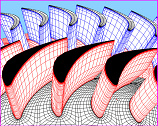 To help teachers and students as young as six explore the rewarding fields of computer science and engineering, eGFI has compiled this list of activities, free online courses, computer animations, and other resources.
To help teachers and students as young as six explore the rewarding fields of computer science and engineering, eGFI has compiled this list of activities, free online courses, computer animations, and other resources.
Read More
Filed under: For Teachers, Grades 6-8, Grades 9-12, Grades K-5, Web Resources | Comments Off on Computer Science Resources
Tags: apps, Class Activities, code.org, Computer Engineering, Computer Programming, Computer Science, Grades 6-8, Grades 9-12, Grades K-5, Internet Resources, Khan Academy, Lesson Plans, MIT, Resources for Teachers, software engineering, Web Resources
Posted on April 30th, 2018 by Mary Lord
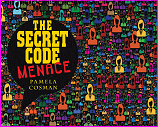 Want to get youngsters excited about computers and engineering? The Secret Code Menace, an adventure story for preteens by electrical and computer engineering professor Pamela Cosman, got 4.99 out of 5 stars from eGFI’s fourth-grade reviewer. Your STEM students will love it, too! (The author’s instructional guide includes problems and answers.)
Want to get youngsters excited about computers and engineering? The Secret Code Menace, an adventure story for preteens by electrical and computer engineering professor Pamela Cosman, got 4.99 out of 5 stars from eGFI’s fourth-grade reviewer. Your STEM students will love it, too! (The author’s instructional guide includes problems and answers.)
Read More
Filed under: Grades 6-8, Grades K-5, K-12 Education News, K-12 Outreach Programs, Special Features | Comments Off on Kid Picks: The Secret Code Menace
Tags: book review, coding, Computer Engineering, Curriculum, Electrical Engineering, forensic, Pam Cosman, Resources for Teachers, software engineering, STEM books, STEM education, The Secret Code Menace, Women in Engineering
Posted on November 23rd, 2016 by Mary Lord
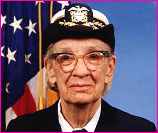 Rear Admiral Grace Murray Hopper was the first woman to earn a Ph.D. in mathematics from Yale, pioneered computer programming languages, discovered the first computer “bug,” and retired as the Navy’s highest ranking, longest-serving female officer in history. They even named a naval destroyer after her.
Rear Admiral Grace Murray Hopper was the first woman to earn a Ph.D. in mathematics from Yale, pioneered computer programming languages, discovered the first computer “bug,” and retired as the Navy’s highest ranking, longest-serving female officer in history. They even named a naval destroyer after her.
Read More
Filed under: Special Features | Comments Off on Amazing Grace
Tags: Computer Engineering, Computer Programming, Computer Science, Engineering in History, History, Mathematics, Science, Women in Engineering, Women in Science
Posted on October 23rd, 2016 by Mary Lord
 Students in grades 3 – 5 learn how alphanumeric symbols can be encoded for many fun purposes. In the first of two sessions, they learn about codes by making their own with a limited number of symbols. They then attempt to break each other’s codes and discover the relationship among encryption, decryption, and shared keys.
Students in grades 3 – 5 learn how alphanumeric symbols can be encoded for many fun purposes. In the first of two sessions, they learn about codes by making their own with a limited number of symbols. They then attempt to break each other’s codes and discover the relationship among encryption, decryption, and shared keys.
Read More
Filed under: Class Activities, Grades K-5, Grades K-5, Lesson Plans | Comments Off on All About Code
Tags: Class Activities, code, coding, computation, computer, Computer Engineering, Cybersecurity, data privacy, encryption, Grades K-5, IEEE, Lesson Plan, password
Posted on October 18th, 2016 by Mary Lord
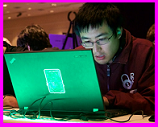 At Carnegie Mellon University, students are learning to thwart cyber attacks by becoming “white hat hackers” – ethical computer sleuths searching for and fixing security gaps before the bad guys can exploit them.
At Carnegie Mellon University, students are learning to thwart cyber attacks by becoming “white hat hackers” – ethical computer sleuths searching for and fixing security gaps before the bad guys can exploit them.
Read More
Filed under: Special Features | Comments Off on Crack Me if You Can!
Tags: Carnegie Mellon University, Computer Engineering, computer security, Cybersecurity, DARPA, David Brumley, electrical engineerng, hack, white hat hackers
Posted on March 20th, 2015 by Mary Lord
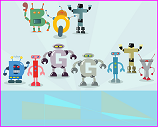 They clean floors, deliver drinks, fetch like puppies, even tell jokes. But can personal robots improve engineering education?
They clean floors, deliver drinks, fetch like puppies, even tell jokes. But can personal robots improve engineering education?
James McLurkin, an assistant professor of computer science at Rice University, certainly thinks so. And no wonder. The pioneer of swarming robotics has seen his bagel-size ’bot transform an introductory engineering course into an unabashedly fun way to convey circuits, mechanics, and other core concepts.
Read More
Filed under: Special Features | Comments Off on ‘Bot Diggity: r-one Robots For All
Tags: ASEE Prism, Computer Engineering, Computer Science, Curriculum, engineering education, James McLurkin, programming, r-one, Rice University, Robotics, robots in education, STEM education, swarmbots, VEX
Posted on November 25th, 2014 by Mary Lord
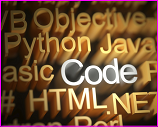 Celebrate Computer Science Education Week from December 8 to 14, 2014, with a host of classroom activities and events designed to inspire the next generation of inventors and programmers. Want to get more girls interested? Code.org kicks off the week with a tutorial featuring Anna and Elsa from the Disney hit Frozen.
Celebrate Computer Science Education Week from December 8 to 14, 2014, with a host of classroom activities and events designed to inspire the next generation of inventors and programmers. Want to get more girls interested? Code.org kicks off the week with a tutorial featuring Anna and Elsa from the Disney hit Frozen.
Kick off the week by organizing an Hour of Code. Join 1.5 million people from around the world in creating fun, hands-on sessions that ignite interest and open opportunities in the wonderful world of computing.
Read More
Filed under: For Teachers, K-12 Education News, K-12 Outreach Programs, Special Features, Web Resources | Comments Off on Computer Science Education Week 2014
Tags: Computer Engineering, computer science education week, hour of code
Posted on September 18th, 2014 by Mary Lord
 To encourage more schools to teach computer science, the nonprofit Code.org has launched Code Studio — a set of tools, lesson plans, and curriculum to help students in kindergarten through high school explore the underlying concepts behind coding. The site includes a dashboard for teachers to monitor their students’ progress.
To encourage more schools to teach computer science, the nonprofit Code.org has launched Code Studio — a set of tools, lesson plans, and curriculum to help students in kindergarten through high school explore the underlying concepts behind coding. The site includes a dashboard for teachers to monitor their students’ progress.
Read More
Filed under: For Teachers, Grades 6-8, Grades 9-12, Grades K-5, K-12 Outreach Programs, Lesson Plans, Web Resources | Comments Off on New Tool for Teaching Kids to Code
Tags: Angry Birds, code.org, Computer Engineering, Computer Science, Internet Resources, learn to program, Lesson Plans, STEM education
Posted on November 27th, 2013 by Mary Lord
 Computing is all around us, from movies to manufacturing to marketing. But only a handful of Americans learn how computers work or can create software, websites, or applications. Computer Science Education Week (December 9-15, 2013) aims to change that equation. This year’s effort: an Hour of Code that organizers hope will engage 10 million students.
Computing is all around us, from movies to manufacturing to marketing. But only a handful of Americans learn how computers work or can create software, websites, or applications. Computer Science Education Week (December 9-15, 2013) aims to change that equation. This year’s effort: an Hour of Code that organizers hope will engage 10 million students.
Read More
Filed under: For Teachers, Grades 6-8, Grades 9-12, Grades K-5, Special Features | Comments Off on Computer Science Education Week 2013
Tags: code writing, code.org, Computer Engineering, Computer Science, computer science education week, Grace Hopper, Public Policy, STEM education, Technology for Learning
 To help teachers and students as young as six explore the rewarding fields of computer science and engineering, eGFI has compiled this list of activities, free online courses, computer animations, and other resources.
To help teachers and students as young as six explore the rewarding fields of computer science and engineering, eGFI has compiled this list of activities, free online courses, computer animations, and other resources.








 Want to get youngsters excited about computers and engineering? The Secret Code Menace, an adventure story for preteens by electrical and computer engineering professor Pamela Cosman, got 4.99 out of 5 stars from eGFI’s fourth-grade reviewer. Your STEM students will love it, too! (The author’s
Want to get youngsters excited about computers and engineering? The Secret Code Menace, an adventure story for preteens by electrical and computer engineering professor Pamela Cosman, got 4.99 out of 5 stars from eGFI’s fourth-grade reviewer. Your STEM students will love it, too! (The author’s  Rear Admiral Grace Murray Hopper was the first woman to earn a Ph.D. in mathematics from Yale, pioneered computer programming languages, discovered the first computer “bug,” and retired as the Navy’s highest ranking, longest-serving female officer in history. They even named a naval destroyer after her.
Rear Admiral Grace Murray Hopper was the first woman to earn a Ph.D. in mathematics from Yale, pioneered computer programming languages, discovered the first computer “bug,” and retired as the Navy’s highest ranking, longest-serving female officer in history. They even named a naval destroyer after her. Students in grades 3 – 5 learn how alphanumeric symbols can be encoded for many fun purposes. In the first of two sessions, they learn about codes by making their own with a limited number of symbols. They then attempt to break each other’s codes and discover the relationship among encryption, decryption, and shared keys.
Students in grades 3 – 5 learn how alphanumeric symbols can be encoded for many fun purposes. In the first of two sessions, they learn about codes by making their own with a limited number of symbols. They then attempt to break each other’s codes and discover the relationship among encryption, decryption, and shared keys. At Carnegie Mellon University, students are learning to thwart cyber attacks by becoming “white hat hackers” – ethical computer sleuths searching for and fixing security gaps before the bad guys can exploit them.
At Carnegie Mellon University, students are learning to thwart cyber attacks by becoming “white hat hackers” – ethical computer sleuths searching for and fixing security gaps before the bad guys can exploit them. They clean floors, deliver drinks, fetch like puppies, even tell jokes. But can personal robots improve engineering education?
They clean floors, deliver drinks, fetch like puppies, even tell jokes. But can personal robots improve engineering education? Celebrate Computer Science Education Week from December 8 to 14, 2014, with a host of classroom activities and events designed to inspire the next generation of inventors and programmers. Want to get more girls interested? Code.org kicks off the week with a tutorial featuring Anna and Elsa from the Disney hit Frozen.
Celebrate Computer Science Education Week from December 8 to 14, 2014, with a host of classroom activities and events designed to inspire the next generation of inventors and programmers. Want to get more girls interested? Code.org kicks off the week with a tutorial featuring Anna and Elsa from the Disney hit Frozen. To encourage more schools to teach computer science, the nonprofit Code.org has launched Code Studio — a set of tools, lesson plans, and curriculum to help students in kindergarten through high school explore the underlying concepts behind coding. The site includes a dashboard for teachers to monitor their students’ progress.
To encourage more schools to teach computer science, the nonprofit Code.org has launched Code Studio — a set of tools, lesson plans, and curriculum to help students in kindergarten through high school explore the underlying concepts behind coding. The site includes a dashboard for teachers to monitor their students’ progress. Computing is all around us, from movies to manufacturing to marketing. But only a handful of Americans learn how computers work or can create software, websites, or applications. Computer Science Education Week (December 9-15, 2013) aims to change that equation. This year’s effort: an Hour of Code that organizers hope will engage 10 million students.
Computing is all around us, from movies to manufacturing to marketing. But only a handful of Americans learn how computers work or can create software, websites, or applications. Computer Science Education Week (December 9-15, 2013) aims to change that equation. This year’s effort: an Hour of Code that organizers hope will engage 10 million students.